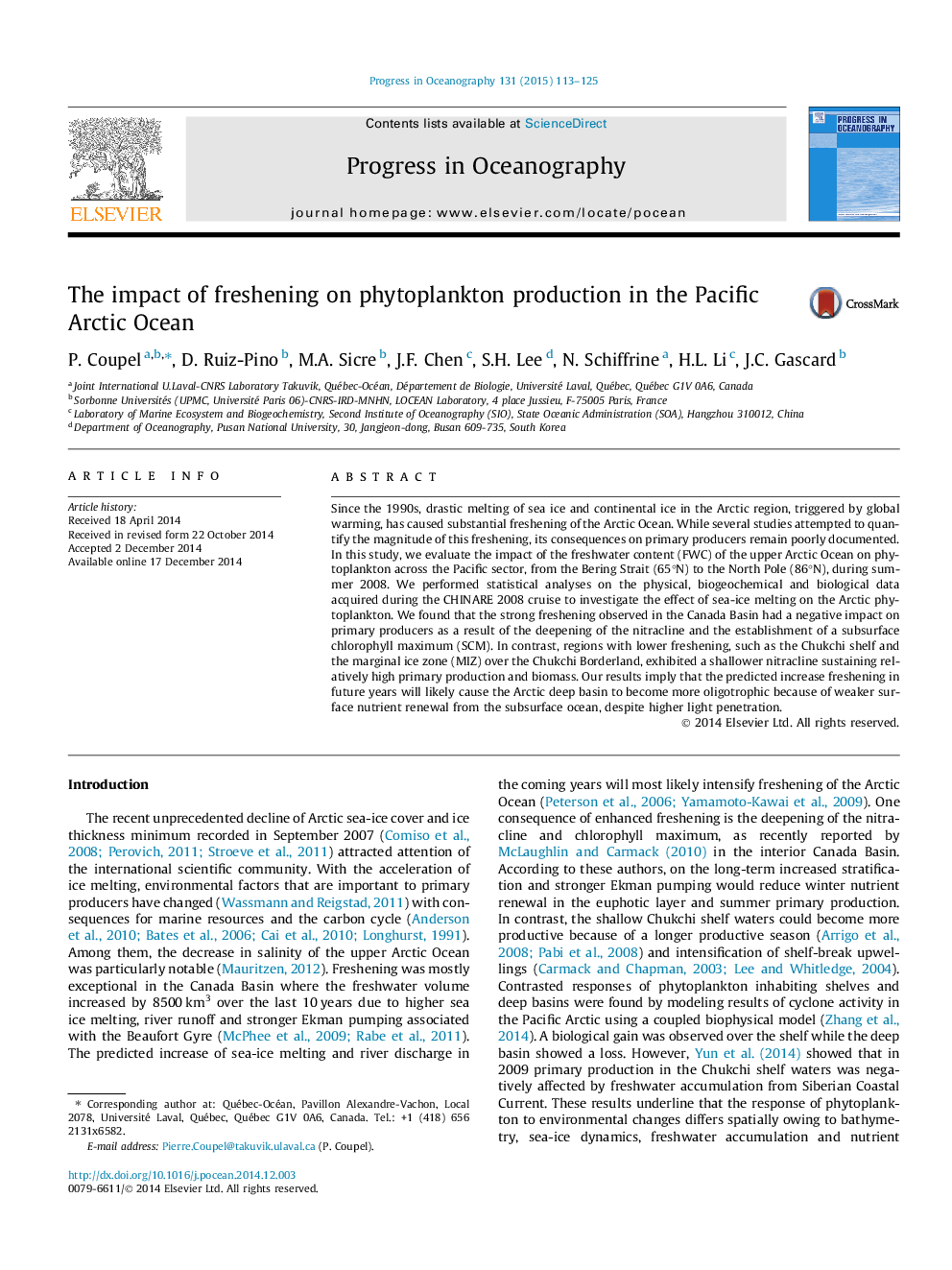| کد مقاله | کد نشریه | سال انتشار | مقاله انگلیسی | نسخه تمام متن |
|---|---|---|---|---|
| 6388504 | 1627925 | 2015 | 13 صفحه PDF | دانلود رایگان |
- The freshwater content (FWC) appears to be a crucial factor of the phytoplankton response to summer sea ice retreat, by acting on the nutrient reservoir depth.
- The strong freshening observed in the Canada Basin had a negative impact on primary producers.
- Biomasses accumulation and relatively high primary production were observed across the offshore marginal ice zone.
- The Chukchi shelf, with the lower FWC, was the most productive area of the cruise with biomasses and primary production values in the range of previous studies.
Since the 1990s, drastic melting of sea ice and continental ice in the Arctic region, triggered by global warming, has caused substantial freshening of the Arctic Ocean. While several studies attempted to quantify the magnitude of this freshening, its consequences on primary producers remain poorly documented. In this study, we evaluate the impact of the freshwater content (FWC) of the upper Arctic Ocean on phytoplankton across the Pacific sector, from the Bering Strait (65°N) to the North Pole (86°N), during summer 2008. We performed statistical analyses on the physical, biogeochemical and biological data acquired during the CHINARE 2008 cruise to investigate the effect of sea-ice melting on the Arctic phytoplankton. We found that the strong freshening observed in the Canada Basin had a negative impact on primary producers as a result of the deepening of the nitracline and the establishment of a subsurface chlorophyll maximum (SCM). In contrast, regions with lower freshening, such as the Chukchi shelf and the marginal ice zone (MIZ) over the Chukchi Borderland, exhibited a shallower nitracline sustaining relatively high primary production and biomass. Our results imply that the predicted increase freshening in future years will likely cause the Arctic deep basin to become more oligotrophic because of weaker surface nutrient renewal from the subsurface ocean, despite higher light penetration.
Journal: Progress in Oceanography - Volume 131, February 2015, Pages 113-125
